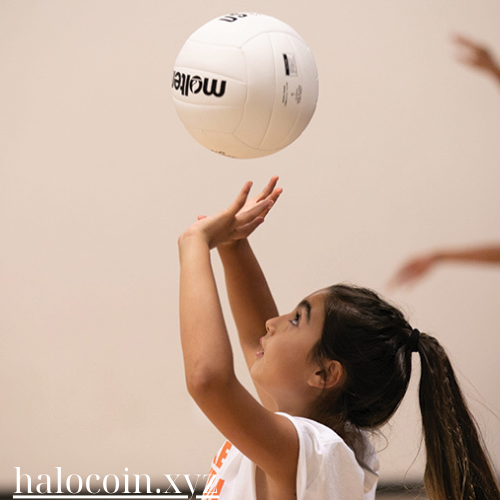Techniques & Coaching
Volleyball Coaching Tips: Strategies for Effective Training
Coaching volleyball effectively involves a blend of technical skill development, strategic understanding, and motivational leadership. To help players reach their full potential, consider these strategies for creating a successful training environment.
1. Focus on Fundamentals
a. Basic Skills
- Serving: Emphasize proper serving techniques, including underhand, overhand, and jump serves. Incorporate drills to improve accuracy, power, and consistency.
- Passing: Teach correct passing form with the forearm and encourage players to keep their hands firm. Use wall drills and partner exercises to enhance accuracy and control.
- Setting: Work on the fundamentals of setting, including hand placement, footwork, and timing. Practice setting to different spots on the court and varying the height of sets.
- Spiking: Develop spiking techniques, including proper approach, jump, and arm swing. Use targeting drills to improve accuracy and power.
b. Defense and Blocking
- Digging: Practice defensive digging with correct body positioning and quick reflexes. Use drills that involve reaction time and movement to different angles.
- Blocking: Teach effective blocking techniques, including timing, hand positioning, and jumping. Use drills to practice blocking against different types of attacks.
2. Develop Game Strategies
a. Offensive Strategies
- Attacking Patterns: Introduce various attacking patterns such as quick sets, back-row attacks, and combinations. Teach players how to read the defense and adjust their approach.
- Transition Play: Focus on transitioning from defense to offense quickly. Practice fast-paced drills that simulate real game scenarios and emphasize quick decision-making.
b. Defensive Strategies
- Reading the Opponent: Teach players to read the opponent’s attack patterns and anticipate their moves. Use drills that focus on positioning and reaction to different types of attacks.
- Coverage and Communication: Emphasize the importance of court coverage and effective communication. Practice drills that encourage players to talk to each other and cover all areas of the court.
3. Enhance Team Dynamics
a. Building Team Chemistry
- Team-Building Activities: Incorporate team-building exercises to strengthen relationships and improve team cohesion. Activities such as trust exercises and group challenges can foster a positive team environment.
- Encouragement and Support: Foster a supportive atmosphere where players encourage each other. Positive reinforcement and constructive feedback are essential for team morale.
b. Effective Communication
- On-Court Communication: Teach players to communicate effectively during matches, including calling for the ball, directing play, and providing feedback.
- Off-Court Communication: Promote open communication channels between players and coaches. Regular meetings and feedback sessions can help address issues and improve performance.
4. Implement Effective Drills
a. Skill-Specific Drills
- Serving Accuracy Drill: Set up targets on the opposite side of the net. Have players aim for these targets to improve serving accuracy and consistency.
- Passing and Setting Drill: Pair players and have them practice passing and setting in a controlled environment. Focus on proper technique and accuracy.
b. Game-Like Scenarios
- Scrimmages: Incorporate regular scrimmages into training sessions to simulate game situations. This helps players apply skills in a realistic setting and improve their game sense.
- Situational Drills: Create drills that replicate specific game scenarios, such as playing with a lead or coming back from behind. This prepares players for various in-game situations.
5. Foster Physical and Mental Development
a. Physical Conditioning
- Strength and Conditioning: Include strength and conditioning exercises to improve overall fitness and prevent injuries. Focus on exercises that enhance agility, power, and endurance.
- Flexibility and Recovery: Incorporate stretching and recovery routines to maintain flexibility and reduce the risk of injury. Encourage proper warm-ups and cool-downs.
b. Mental Toughness
- Goal Setting: Help players set both individual and team goals. Regularly review progress and adjust goals as needed to keep players motivated.
- Focus and Resilience: Teach techniques for maintaining focus and handling pressure. Use mental exercises and visualization techniques to build resilience and confidence.
6. Embrace Technology and Analysis
a. Video Analysis
- Game Footage Review: Use video analysis to review game footage and provide detailed feedback to players. Highlight strengths and areas for improvement to enhance understanding and performance.
- Technique Analysis: Analyze individual techniques using slow-motion videos to identify areas for refinement and correct form.
b. Statistical Analysis
- Performance Metrics: Track performance metrics such as serve accuracy, attack efficiency, and defensive success. Use this data to make informed decisions and tailor training sessions.
7. Create a Positive Training Environment
a. Encouragement and Motivation
- Positive Reinforcement: Use positive reinforcement to motivate players and acknowledge their efforts and improvements. Celebrate achievements, both big and small.
- Constructive Feedback: Provide constructive feedback that focuses on areas for improvement while maintaining a positive and encouraging tone.
b. Fun and Engaging Sessions
- Varied Drills: Incorporate a variety of drills and activities to keep training sessions engaging and enjoyable. Use games and challenges to make practice fun and rewarding.
- Player Involvement: Involve players in the planning process by asking for their input and ideas. This fosters a sense of ownership and commitment to the training program.
Conclusion
Effective volleyball coaching combines skill development, strategic understanding, and team dynamics. By focusing on fundamental skills, implementing strategic drills, and fostering a positive environment, you can help your players excel on the court. Remember to continually adapt your coaching methods to meet the needs of your players and keep trainin

